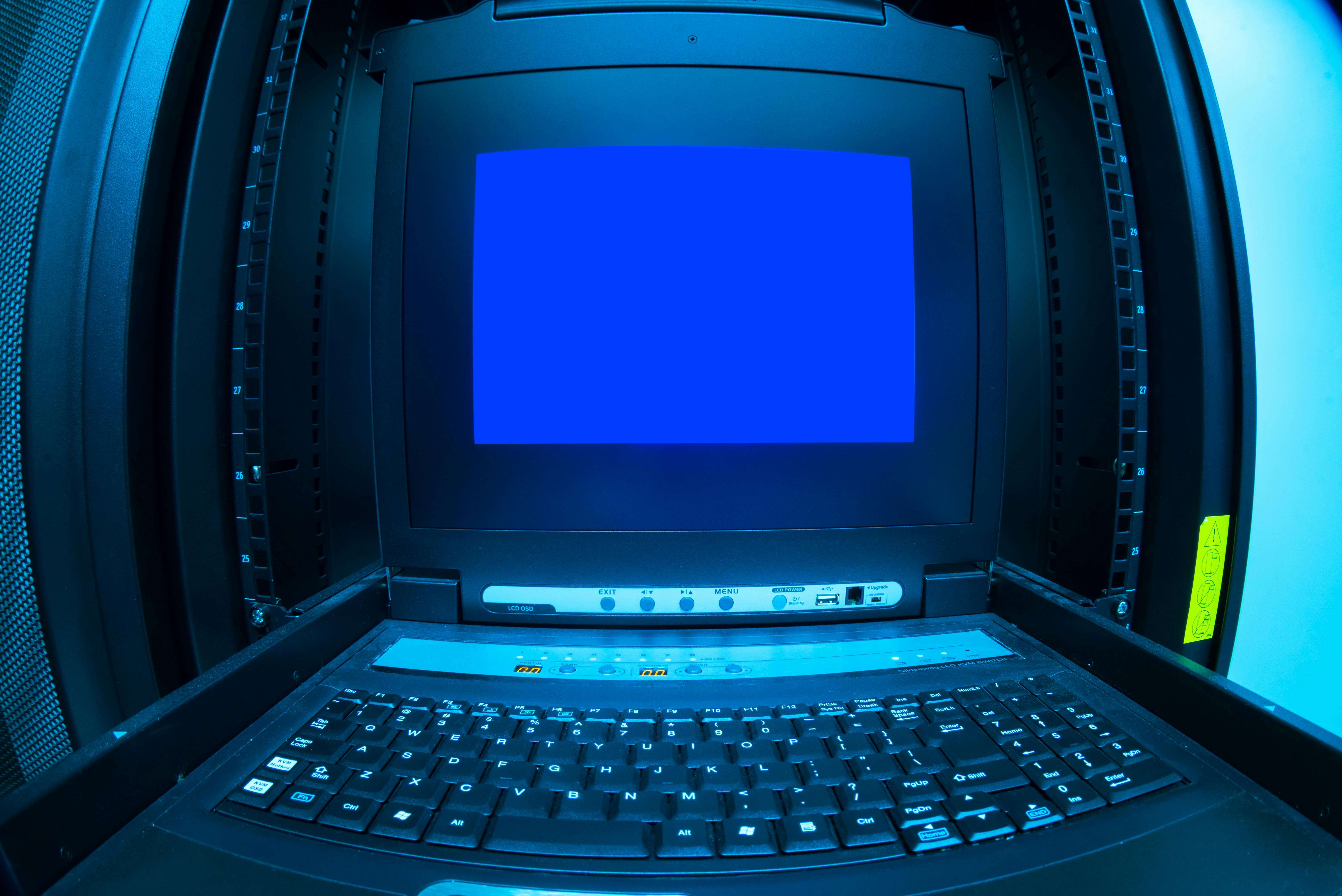Are you tired of dealing with Windows 11 monitor flicker issues that disrupt your workflow and strain your eyes? You’re not alone! Many users have reported this frustrating problem, which can stem from a variety of causes, including outdated drivers, incompatible settings, or even hardware malfunctions. In this article, we’ll explore simple yet effective fixes to help you resolve these annoying flickering issues and get back to enjoying your Windows 11 experience without interruptions.
Monitor flickering on Windows 11 can be a real headache, but it doesn’t have to be! From adjusting your display settings to updating graphics drivers, there are several straightforward solutions that can restore stability to your screen. Have you ever wondered if the frequency settings of your monitor might be too low? Or maybe your graphics driver is outdated? These are just a few of the common culprits behind flickering screens that we’ll address in detail.
Additionally, we’ll guide you through troubleshooting steps that anyone can follow, regardless of their technical expertise. Whether you’re a casual user or a tech-savvy individual, you’ll find actionable tips that can make a difference. So, if you’re ready to put an end to that annoying flicker and reclaim your viewing pleasure, let’s dive into these proven methods and get your Windows 11 monitor performing at its best!
Top 7 Proven Methods to Eliminate Monitor Flicker on Windows 11 Instantly

Monitor flickering can be super annoying, especially when you’re trying to focus on work or enjoy some gaming on your Windows 11. It’s like a nagging fly that just won’t go away. Many users in New York and beyond face this issue, and it can stem from various reasons, like outdated drivers or incorrect refresh rates. Here’s a rundown of the top 7 proven methods to eliminate monitor flicker on Windows 11 instantly.
1. Update Graphics Drivers
Updating your graphics drivers is often the first step in solving Windows 11 monitor flicker issues. If your drivers are outdated, they may not effectively communicate with your monitor. To update them, you can:
- Open Device Manager by right-clicking the Start button.
- Expand the “Display adapters” section.
- Right-click your graphics card and select “Update driver.”
Make sure you choose the option to search automatically for updated driver software. You might be surprised how many issues this fix alone solve.
2. Adjust Refresh Rate
Sometimes, the refresh rate setting on Windows 11 might not align with your monitor’s capabilities. Here’s how you change it:
- Right-click on the desktop and select “Display settings.”
- Scroll down to “Advanced display settings.”
- Under “Refresh rate,” choose the highest rate supported by your monitor.
Setting the correct refresh rate can dramatically reduce flickering.
3. Check Cable Connections
Loose or damaged cables can also cause flickering. It’s important to check your connection. Make sure your HDMI, DisplayPort, or VGA cables are securely connected. If they’re worn out, consider replacing them. A good quality cable can make a huge difference.
4. Disable Hardware Acceleration
Sometimes, hardware acceleration in certain applications can cause conflicts leading to flickering. For example, in browsers like Chrome or Firefox, you can disable this feature:
- Go to Settings in your browser.
- Find the “Advanced” or “System” section.
- Toggle off the “Use hardware acceleration when available” option.
This simple tweak may help in reducing screen flicker.
5. Modify Power Settings
Windows 11 power settings can also play a role in monitor flicker. If your power plan is set to “Power saver,” it might cause performance issues. Switch to “Balanced” or “High performance” by following these steps:
- Open Control Panel.
- Go to “Hardware and Sound” and then “Power Options.”
- Select “Change plan settings” next to your chosen plan.
Adjusting these settings can enhance your overall system performance.
6. Change Display Resolution
Sometimes, using a resolution that doesn’t match your monitor’s native resolution can lead to flickering. To change the resolution:
- Go to Display settings.
- Under “Scale and layout,” find the “Display resolution” dropdown.
- Choose the recommended resolution for your monitor.
This ensures your display operates smoothly.
7. Run Windows Troubleshooter
If all else fails, running the Windows troubleshooter can help identify and fix issues. To do this:
- Open Settings and navigate to “System.”
- Click on “Troubleshoot” and then select “Other troubleshooters.”
- Find “Display” and click on “Run.”
The troubleshooter will guide you through steps to resolve flicker issues.
By following these simple fixes, you can solve Windows 11 monitor flicker issues effectively. Each method targets different potential causes, so it’s worth trying them out. Remember, you don’t have to live with flickering screens. Try these methods and enjoy a smoother visual experience.
Is Your Windows 11 Screen Flickering? Discover 5 Quick Fixes That Work!

Is your Windows 11 screen flickering? This problem can be really annoying, especially when you’re trying to work or enjoy a movie. Flickering might be caused by numerous factors, such as outdated drivers, incompatible software, or even incorrect display settings. But don’t worry, there are quick fixes that can help you solve Windows 11 monitor flicker issues effectively. In this article, we’ll explore five simple solutions that could get your screen back to normal in no time.
Update Graphics Drivers
One of the first things you should do when you notice your screen flickering is to check for driver updates. Graphics drivers are crucial for your computer’s display performance. If they’re outdated, it can lead to all sorts of problems, including flickering.
- To update your drivers:
- Press
Windows + Xand select Device Manager. - Expand the Display adapters section.
- Right-click your graphics card and select Update driver.
- Follow the prompts to automatically search for updated driver software.
- Press
Sometimes, manufacturers release updates to fix bugs and improve performance, so keeping your drivers up-to-date is always a good practice.
Adjust Refresh Rate
Another common cause of flickering issues is an incorrect refresh rate setting. Your monitor has a specific refresh rate, and if your settings don’t match, flickering can occur.
To adjust the refresh rate:
- Right-click on the desktop and select Display settings.
- Scroll down and click on Advanced display settings.
- Choose the display you want to change, then look for the Refresh rate option.
- Select a refresh rate that is compatible with your monitor (usually 60Hz or higher).
Setting the correct refresh rate can make a huge difference, but remember to check your monitor’s specifications first.
Disable Hardware Acceleration
Sometimes, applications can cause screen flickering due to hardware acceleration settings. Disabling hardware acceleration can help resolve this issue.
- Here’s how to disable it in popular browsers:
- For Chrome: Go to Settings > Advanced > System, then toggle off “Use hardware acceleration when available.”
- For Firefox: Go to Options > General > Performance, and uncheck “Use recommended performance settings,” then uncheck “Use hardware acceleration when available.”
Disabling this feature can help reduce flickering, especially while using graphics-intensive applications.
Change Display Resolution
If your screen flickering persists, try changing the display resolution. Sometimes, an incompatible resolution setting can lead to flicker problems.
- To change your resolution:
- Right-click on the desktop and select Display settings.
- Scroll down to Scale and layout.
- Under Display resolution, choose a different resolution from the dropdown menu, preferably the recommended option.
Adjusting the resolution can help stabilize your display, but always make sure it’s set to a level your monitor supports.
Check for External Devices
Lastly, external devices connected to your computer might also cause flickering. Cables can be faulty or not securely connected, and other devices could interfere with your display.
- To troubleshoot:
- Disconnect any external monitors, projectors, or TV connections.
- Check all cables for damage or loose connections.
- Try using different cables if available.
Sometimes, simply removing an external device can solve the flickering once and for all.
By following these five quick fixes, you can tackle the problem of screen flickering on Windows 11. It’s often a simple issue that can be resolved with a few adjustments. If the problem persist, consider seeking professional help from a technician to ensure that it’s not a hardware issue. Don’t let flickering screens disrupt your digital experience!
The Ultimate Guide to Troubleshooting Monitor Flicker Issues in Windows 11

If you ever find your monitor flickering while using Windows 11, you not alone. This problem is common and can be quite annoying. Flickering can be caused by various issues, from software settings to hardware malfunctions. Luckily, there are many potential fixes that can help you solve Windows 11 monitor flicker issues, and in this guide, we will explore those options.
Understanding Monitor Flicker
Monitor flicker is when your screen briefly changes brightness or shows lines, which can be distracting. It may happen during certain tasks, like gaming or watching videos. Some of the common causes of flickering include:
- Refresh rate problems
- Outdated drivers
- Conflicting software applications
- Faulty cables or connections
- Hardware issues
Check Refresh Rate Settings
One of the first things you should try is checking your display’s refresh rate. Windows 11 allows you to adjust this setting easily. Here’s how:
- Right-click on the desktop and select Display settings.
- Scroll down and click on Advanced display settings.
- Under the Refresh rate dropdown, ensure you select the recommended rate.
A refresh rate that’s set too low can cause flickering. Usually, 60Hz is the standard but some monitors support higher rates like 120Hz or 144Hz.
Update Graphics Drivers
Outdated or incorrect drivers can lead to display issues. Ensuring your graphics drivers are up-to-date is crucial. To update them, follow these steps:
- Open Device Manager by right-clicking on the Start button.
- Expand the Display adapters section.
- Right-click on your graphics card and select Update driver.
- Choose Search automatically for updated driver software.
If your drivers are outdated, this could resolve the flickering issue.
Disable Hardware Acceleration
Sometimes, hardware acceleration in applications can cause flickering. Disabling it can be helpful. Here’s how to disable it in common applications:
- Web Browsers: Go to settings and look for hardware acceleration options.
- Games: Check the graphics settings in the game menu.
Check Cables and Connections
Faulty cables or loose connections can lead to flickering. Make sure that your monitor cables are secure and in good condition. If possible, try using a different cable or port.
Run the Windows Troubleshooter
Windows 11 comes with built-in troubleshooters that can help resolve monitor issues. To run it:
- Go to Settings.
- Click on System, then select Troubleshoot.
- Click on Other troubleshooters and find the Display troubleshooter.
This can help identify and fix common problems automatically.
Adjust Display Scaling
Sometimes the scaling settings can lead to flickering. To adjust these settings:
- Right-click on the desktop and select Display settings.
- Under Scale and layout, try changing the scaling percentage to see if it mitigates the flickering.
Additional Tips
Here are some extra options to consider if the above solutions don’t work:
- Use a different monitor: This can help determine if the issue is with the monitor itself.
- Check for Windows updates: Staying up to date with the latest OS updates can fix bugs that might cause flickering.
- Look into refresh rate settings in games: Some games may have specific settings that need adjustments.
With these fixes, you should be able to troubleshoot and solve Windows 11 monitor flicker issues effectively. Remember, it can take some trial and error to find what works best for your situation. Stay patient, and you’ll get it sorted!
5 Common Causes of Windows 11 Monitor Flicker and How to Resolve Them

Experiencing monitor flicker on Windows 11 can be quite annoying, it disrupts your workflow and can even lead to headaches. Many New Yorkers working from home or gaming on their PCs find this issue to be a serious problem. Understanding why this flickering happens and how to fix it is essential. Here are five common causes of Windows 11 monitor flicker and some solutions to resolve them.
1. Outdated Graphics Drivers
One of the most frequent reasons of monitor flicker is outdated graphic drivers. When a driver is not up to date, it may not communicate properly with your operating system. This can lead to display issues like flickering screens. Check you’ve the latest drivers by following these steps:
- Open Device Manager
- Expand the “Display adapters”
- Right-click your graphics card and select “Update driver”
2. Incorrect Refresh Rate
If the refresh rate of your monitor does not match the settings in Windows 11, flickering can happen. Each monitor has a specific refresh rate, often 60Hz or 144Hz. To check or change your refresh rate:
- Go to Settings > System > Display
- Scroll down to “Advanced display settings”
- Check and adjust the refresh rate to match your monitor’s specifications.
3. Faulty Cables or Connections
Sometimes the physical connections between your monitor and computer can cause flickering. Loose or damaged cables can interrupt the signal, leading to screen issues. To resolve this:
- Inspect your cables for any visible damage
- Ensure they are securely plugged in
- Try using different cables if possible, like switching from HDMI to DisplayPort.
4. Background Applications
Running too many applications in the background can strain your system resources and cause flickering. This is especially true if you are running graphic-intensive applications like games or design software. To minimize this:
- Press Ctrl + Shift + Esc to open Task Manager
- Identify any unnecessary applications consuming high resources
- Close these applications to free up system resources.
5. Hardware Issues
Sometimes flickering can be a sign of underlying hardware problems. This could range from a failing monitor to issues with your graphics card. If you suspect this might be the case, you can:
- Test your monitor on a different computer to see if the flicker persists
- Check your graphics card by running diagnostics or using another card if available.
Additional Tips to Solve Windows 11 Monitor Flicker Issues
- Adjust Display Settings: Sometimes changing the scaling options, such as setting it to 100% or 125%, can help.
- Disable Hardware Acceleration: For certain applications, like browsers, disabling hardware acceleration can reduce flicker.
- Check for Windows Updates: Ensure your operating system is up to date as updates can fix bugs related to display issues.
These simple fixes can help you solve Windows 11 monitor flicker issues effectively. Regular maintenance of your system and keeping software updated is key to preventing these annoying problems. Remember, if you’ve tried everything and still face flickering, it could be time to consult with a professional or consider a hardware upgrade for a permanent solution. Don’t let flickering screens disrupt your work — take action today!
Step-by-Step Solutions to Fix Windows 11 Monitor Flicker: What You Need to Know

Windows 11 is known for its sleek design and improved performance. But, like any operating system, it’s not perfect. Many users report annoying issues like monitor flickering, which can be distracting and frustrating. If you’re facing this problem, don’t worry! You can solve Windows 11 monitor flicker issues with these simple fixes. Let’s dive into step-by-step solutions to fix Windows 11 monitor flicker and what you need to know to get your display back to normal.
Understanding Monitor Flicker
Monitor flicker is when your screen appears to flash or blink, which could be caused by various factors. Sometimes, it’s a hardware issue, but it can also be related to software settings. It could be due to outdated graphics drivers, incorrect refresh rates, or even faulty cables. Knowing these causes can help you narrow down the issue.
Basic Troubleshooting Steps
Before you dive deep into more complex solutions, try these simple troubleshooting steps:
-
Check Your Cables: Loose or damaged cables can cause flickering. Ensure the monitor cable is securely connected to both your monitor and computer. If the cable looks frayed or damaged, consider replacing it.
-
Change the Refresh Rate: Sometimes, the refresh rate is not set correctly. Right-click on your desktop, select “Display settings,” scroll down and click on “Advanced display settings.” Here, you can change the refresh rate.
-
Update Graphics Drivers: Outdated drivers can lead to compatibility problems. Go to your graphic card manufacturer’s website and download the latest drivers.
-
Disable Hardware Acceleration: Some applications like browsers and games use hardware acceleration. Disabling this feature can reduce flickering. Check the settings in those applications to turn off hardware acceleration.
Advanced Fixes for Persistent Issues
If the basic steps didn’t work, you might need to dig a little deeper:
-
Adjust Display Settings: Sometimes, the resolution settings are not optimal for your monitor. Go to “Display settings” and try different resolutions, especially the one that is recommended by Windows.
-
Use the Display Troubleshooter: Windows 11 has built-in troubleshooting for display issues. Go to “Settings,” select “Update & Security,” then “Troubleshoot,” and find “Additional troubleshooters.” Run the display troubleshooter.
-
Check for Windows Updates: Keeping Windows updated can fix bugs that cause flickering. Go to “Settings,” then “Windows Update,” and check for updates.
-
Try Different Monitor Ports: If your monitor has multiple ports (like HDMI, DisplayPort, etc.), try using a different port. Sometimes, the issue is specific to one port.
Additional Considerations
-
Monitor Settings: Check your monitor’s on-screen settings. Some monitors have settings for flicker-free technology that might need to be enabled.
-
Environmental Factors: Sometimes, nearby electronic devices can interfere with your monitor. Move devices like speakers or phones away from the monitor to see if it helps.
-
External Factors: If you’re using a laptop, ensure it’s not running on low power mode as this can affect performance.
Final Thoughts
Addressing Windows 11 monitor flicker issues can seem daunting, but most of the fixes are simple and easy to implement. By following these step-by-step solutions, you should be able to enjoy a flicker-free experience. Remember, if the problem persists after trying all these methods, it might be time to consult a professional or consider hardware replacement. Don’t let flickering screens disrupt your workflow or gaming. With the right approach, you can fix it and get back to enjoying your digital experience hassle-free.
Conclusion
In conclusion, resolving monitor flicker issues in Windows 11 is crucial for maintaining an optimal viewing experience and enhancing productivity. We discussed several effective troubleshooting steps, including updating graphics drivers, adjusting refresh rates and display settings, and ensuring that cables and connections are secure. Additionally, checking for Windows updates and examining hardware compatibility can prevent flickering problems before they arise. By systematically applying these solutions, users can significantly reduce or eliminate flickering and enjoy a smoother performance on their devices. If you continue to experience issues, consider reaching out to technical support or exploring further hardware diagnostics. Remember, a clear and stable display is essential for both work and leisure, so take the necessary steps today to optimize your Windows 11 experience. Don’t let flickering disrupt your workflow—act now to reclaim your screen’s clarity and comfort!

